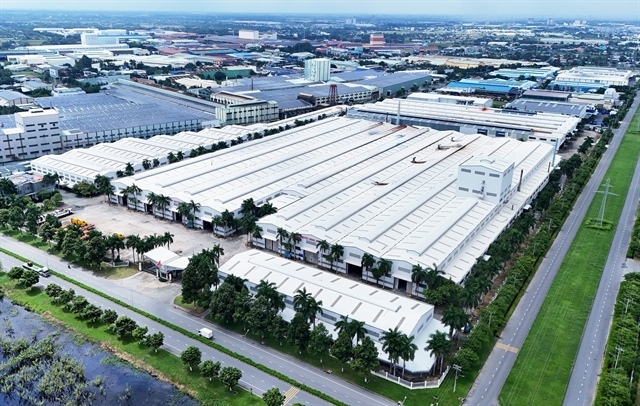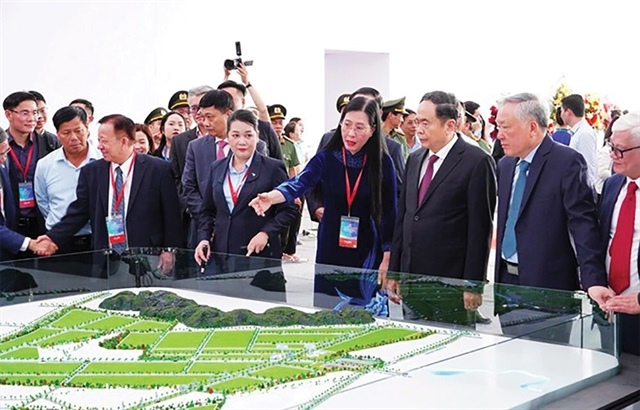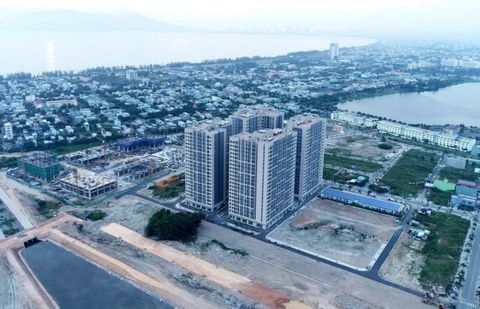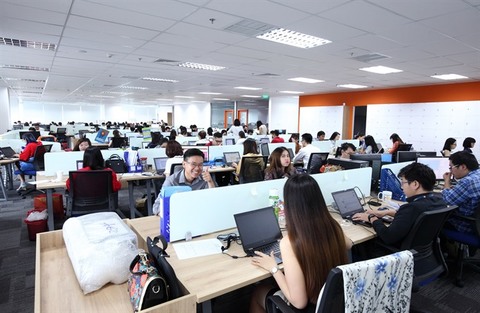High in supply of high-rise condos
High in supply of high-rise condos
In the first quarter of the year, real estate developers launched massive new condo projects with tempting promotions. But will the market be in a position to absorb such an enormous supply?
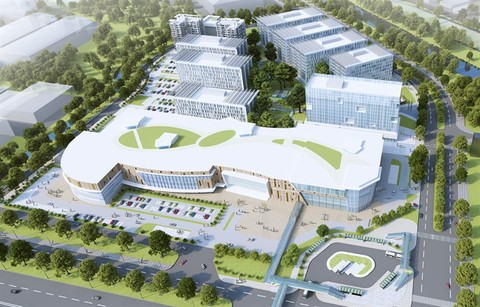
A report by leading real estate advisory firm, CBRE Vietnam, shows that the number of condos touched 35,000 units in 2017, triple the number reported in 2013. This figure is expected to keep growing over the next few years.
The real estate market has seemingly reached a point of saturation, while new projects are being continuously launched. Many customers, however, lament that current housing prices have remained fairly high compared to what is affordable to the people who actually need housing.
In addition, not every project can deliver a full suite of services with developed amenities and convenient transport services.
Hard choices due to a lack of service facilities
In Hanoi’s current market, minor apartment projects do not provide synchronised service facilities systems, as developers have mainly resorted to existing ones in surrounding areas to serve the residents. They can neither deliver outstanding value nor offer incentives to house buyers.
By contrast, condo projects by leading developers like Malaysian-backed Gamuda Land or local Vingroup, situated in central business districts, feature comprehensive utility systems, offering more comfort to their customers.
Award-winning condo projects in vibrant urban areas like Gamuda Gardens and Times City feature well-planned comprehensive service facilities to provide maximum comfort to their residents.
The issue of amenities as part of condo projects has garnered particular attention from prospective buyers lately.
“I want my future home to be situated in an area with a full range of public utilities such as a medical clinic, a convenience store, and a gym, all at a reasonable price,” said Tran T. Nam, who is looking for a condo for his family.
For most projects, such serviced facilities are almost completely absent, not available in full, or offered at an inflated price, which places a burden on customers.
High population density hinders transport
Traffic jams are a thorny issue to people living in downtown areas, particularly those areas where a raft of office towers and high-rise buildings are located. Therefore, the population and construction density at these buildings need to be suitably adjusted to avoid putting pressure on internal transport routes.
Traffic jams, however, have become commonplace across Hanoi, as developers have mainly rolled out projects in downtown areas or central business districts that often have high traffic volumes. This has made travelling these areas very difficult for people, particularly during peak traffic hours. In addition, housing projects in central areas often report inflated prices, beyond the budgets of many customers.
Condo projects which are not very far from central areas and offer high connectivity to major roads and the inner city, ensuring a balance in population density, appear to be the right option for prospective buyers.
They also promise compelling profit rates to real estate investors by leasing out apartments meeting all above-mentioned criteria instead of condos in downtown areas, which claim high leasing rates compared to the average.
Amid plentiful supply sources, the developers must have a thorough grasp of their potential customer group’s actual needs, thereafter launching their projects in a suitable market segment.
This year is set to be a promising one for Hanoi’s condo market. Therefore, developers must make avail of the opportunities to deliver best-quality products with a suitable price tag to the customers.



